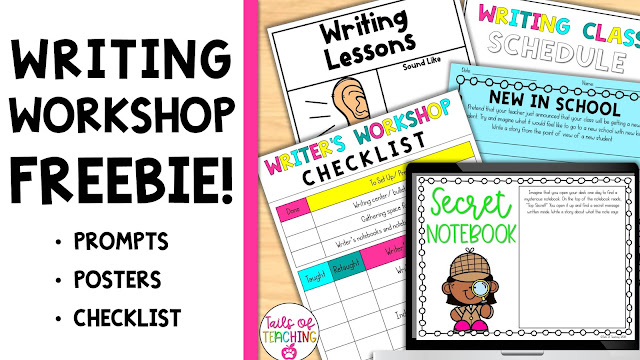What does your writers’ workshop look like during independent time? Do your students maintain a driven focus on their work? Or does your writers’ workshop writing time stare out strong and then fizzle into distractions and students doodling on their notebooks? The difference between a writers’ workshop with strongly focused writers and one where it all falls apart is one simple little word, stamina. Writing stamina is the sole difference between helping your students move mountains in their writing skills and barely making progress at all. Writing stamina is the key factor, the secret sauce to long-maintained writing blocks where students can hone in on their writing strategies and skills. So what is writing stamina and how do my students get it? Read more teacher friend and because I am about to share my top three tips for boosting your student's writing stamina right now!
Tip #1 in My Top 3 Ways to Boost Your Students Writing Stamina Right Now: Teach Writing Stamina.
This tip is so simple that unfortunately, most teachers blast right past it. For your students to have writing stamina in their writers’ workshop, they must first know what writing stamina is. In the beginning weeks of the school year, when you are teaching writers’ workshop routines and procedures, take time to have writing stamina mini-lessons. Discuss writing stamina in-depth, and use active modeling, and posters to show writing stamina to your students. Show them what it looks like, sounds like, and feels like to have writing stamina in your class or grade level. This is an incredibly powerful step to boosting your student's writing stamina because simply put, how can they have writing stamina when they have never been taught, explicitly what writing stamina is? How can you jump and grab a bar that you cannot see? Take time and teach writing stamina to your students so they will know the goal that they are working towards.
Tip #2 in My Top 3 Ways to Boost Your Students Writing Stamina Right Now: Set a Class Writing Stamina Goal
Positive peer pressure is a powerful thing. Why not use this power to your advantage? After teaching your students about writing stamina, set your first class-wide writing stamina goal. An example could be a goal to have each student in the class participate in focused writing for twenty minutes. Have a discussion with your students about a goal that they want to set and that you feel is appropriate and achievable for your group of learners. Once you have set the goal, put it up large and in charge on a writing stamina chart or poster. Hang your goal and the progress you make on the wall. Be sure to check in on it frequently and discuss the progress made with your students. When your class wide goal is met, be sure to celebrate! Reaching a class wide goal is a big deal and should be treated as such. Honor your students who have worked on their writing stamina and collaborate to raise the bar and set your next goal. You will build a community of writers who want a long and focused writing block this way and the impacts it will make on their writing skills will amaze you! You can use a digital timer like the ones HERE to project and help students stay focused while they are working towards their writing stamina goals.
Tip #3 in My Top 3 Ways to Boost Your Students Writing Stamina Right Now: Set Individual Goals.
In the same way, you have a class wide and individual behavior management system, so should you too for writing goals. As teachers, we know that the key to tremendous student growth is to keep them inside of their zone of proximal development. If you have a student who cannot stay focused for ten minutes, the class goal of twenty will seem unachievable and defeating for them. Break this monster goal down into bite-sized pieces for them. Use visuals like bar graph charts where individual students can color in to track their progress and see the gains that they are making. Having individual writing stamina goals and conferences will not only help individual students to boost their writing stamina but your whole class's writing stamina collectively. You can use individual digital timers to help students track their writing stamina times and graph them. Soon they will start to see their writing stamina grow and their skills will improve as well.
Writing stamina is crucial for all students. Writing stamina is the key to helping our students stay focused on their work and move mountains in their writing skills and craft. Are you looking for done-for-you writing stamina teaching resources? Explore the writing stamina charts, posters, data sheets, and more that I use by clicking THIS LINK NOW!
Are you ready to rock your writing workshop this year? I've got your back and the tools you need with my epic new writing workshop FREEBIE! This writing workshop includes everything you need to get your writing block rocking, rolling, and make a massive impact with your students! I would love to share my writing workshop checklist, posters, and 5 printable + Google Classroom ready writing prompt resource with you so you can try out the tips you just read about! Simply click the button below and download your FREE writing workshop resources now!




























